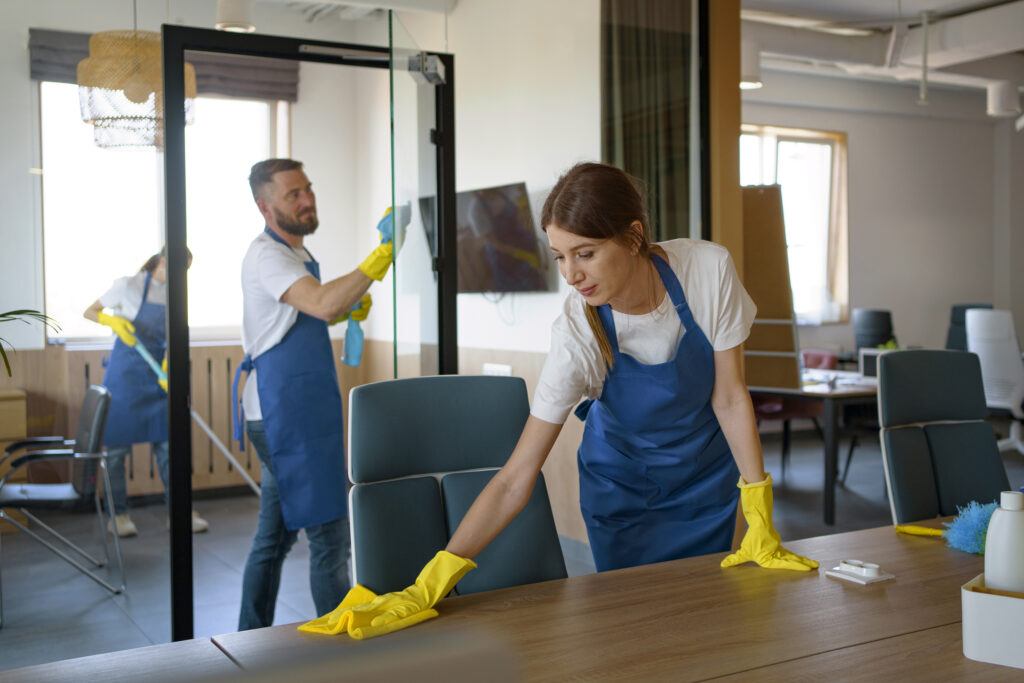Exiting a rented home is normally stressful in any scenario, but the most crucial element toward getting your bond back is end-of-lease cleaning. This blog offers a comprehensive end-of-lease cleaning checklist that is a mandatory procedure for tenants to get their homes clean and impress the landlord.
End-of-lease cleaning is a deep cleaning process required when vacating a rented home. This involves a deep cleaning of the entire property, thus keeping the established standards by the estate agent or landlord. As opposed to normal cleaning, end-of-lease cleaning is a much more detailed process and attempts to restore the property to its original state.
When Should You Start Cleaning?
In order to prevent last-minute stress, you need to begin preparing your end-of-lease cleaning a week prior to your move-out date. When you hire professional end-of-lease cleaning, schedule their services two weeks prior to your move-out date so that you have an appointment on your calendar.
How to Complete Your End-of-Lease Cleaning Checklist
1. Living Room & Bedrooms
- Dust all surfaces, including shelves and skirting boards.
- Wipe down walls and remove scuff marks.
- Clean windows, blinds, and curtains.
- Vacuum and steam clean carpets to remove stains and embedded dirt.
- Mop hard floors with a disinfectant solution.
- Remove cobwebs and clean light fixtures to eliminate dust buildup.
- Wipe down doorknobs, light switches, and other high-touch areas.
- Ensure wardrobes and drawers are emptied and wiped inside and out.
2. Kitchen Cleaning
- Deep clean the oven, stove top, and range hood to remove grease and grime.
- Scrub countertop and backsplash to eliminate stains and bacteria.
- Clean sinks and taps, removing limescale and food debris.
- Wipe down cabinets (inside and out), ensuring no leftover crumbs or stains.
- Remove grease and food stains from walls to restore the kitchen’s original condition.
- Mop and disinfect floors to eliminate bacteria and odors.
- Empty and clean the refrigerator and freezer if applicable.
- Sanitise dishwashers, microwaves, and other kitchen appliances.
3. Bathroom & Laundry
- Scrub toilets, sinks, and bathtubs thoroughly to remove stains and buildup.
- Remove soap scum and mold from tiles and grout for a fresh appearance.
- Clean mirrors and vanity units to eliminate watermarks and fingerprints.
- Disinfect high-touch areas such as faucet handles, towel racks, and light switches.
- Empty and clean exhaust fans to improve air circulation.
- Mop and sanitize floors with an antibacterial solution.
- Ensure washing machines and dryers are wiped down and free of lint.
- Remove any hair or debris from drains to prevent clogs.
4. Outdoor Areas
- Sweep patios and balconies to remove dust and leaves.
- Remove cobwebs and dirt from walls and railings.
- Dispose of any rubbish left behind to maintain a tidy environment.
- Wipe down outdoor furniture if it belongs to the rental property.
- Hose down and clean garage floors to remove oil stains and dirt.
- Trim any overgrown plants if required by the rental agreement.
Why is End of Lease Cleaning Important?
End-of-lease cleaning ensures tenants get their full bond refund. A clean property increases the chances of passing the final inspection without deductions. Landlords and property managers have strict cleanliness standards, and failure to meet these can result in costly bond deductions. Thorough cleaning eliminates dirt, grime, and allergens, ensuring the next tenants move into a hygienic and well-maintained space. Additionally, unclean property can lead to disputes, delaying the bond refund process. By investing time and effort in meticulous end-of-lease cleaning, tenants can leave on good terms, safeguard their deposit, and avoid unnecessary financial losses. Hiring professional end-of-lease cleaning services can further enhance the likelihood of a successful inspection, as experts use industry-grade equipment and techniques to deliver top-quality results.
Final Inspection Tips
To pass the final inspection, follow these tips:
Double-check all cleaning areas using the checklist – Ensure every section of the property is cleaned thoroughly, including hard-to-reach areas like corners, behind appliances, and inside cupboards.
Take photos of the cleaned property for documentation – Keeping photographic evidence of the cleaned premises can serve as proof in case of disputes with the landlord or property manager.
Fix minor damages before the inspection – Repair any small damages such as nail holes, scuff marks, or loose fixtures to avoid deductions from your bond refund.
Ask the landlord for a pre-inspection. A pre-inspection allows the landlord or real estate agent to point out any areas that may need additional attention, giving you time to rectify issues before the final inspection.
Ensure the property is vacant before the final inspection – Remove all personal belongings and rubbish to avoid unnecessary delays or issues.
Check for lingering odors – Use natural deodorisers or ventilate the space well to eliminate any unwanted smells that could negatively impact the inspection.
Is Hiring Professional Cleaners Worth It?
Considering the time and effort it takes to perform a thorough end-of-lease cleaning, hiring professional end-of-lease cleaning services can be a wise investment. Professional cleaners have the expertise, tools, and cleaning products to meet real estate standards, reducing the risk of bond deductions. If you lack time or proper cleaning equipment, investing in a professional cleaning service is highly recommended.
Conclusion
Remember, a thorough end-of-lease cleaning is not just about securing your bond refund; it’s also about leaving a positive impression. Whether you choose to clean yourself or hire professional services, following this checklist will ensure a stress-free move-out experience. Prioritise end-of-lease cleaning to avoid unnecessary deductions and ensure a seamless transition to your new home.

